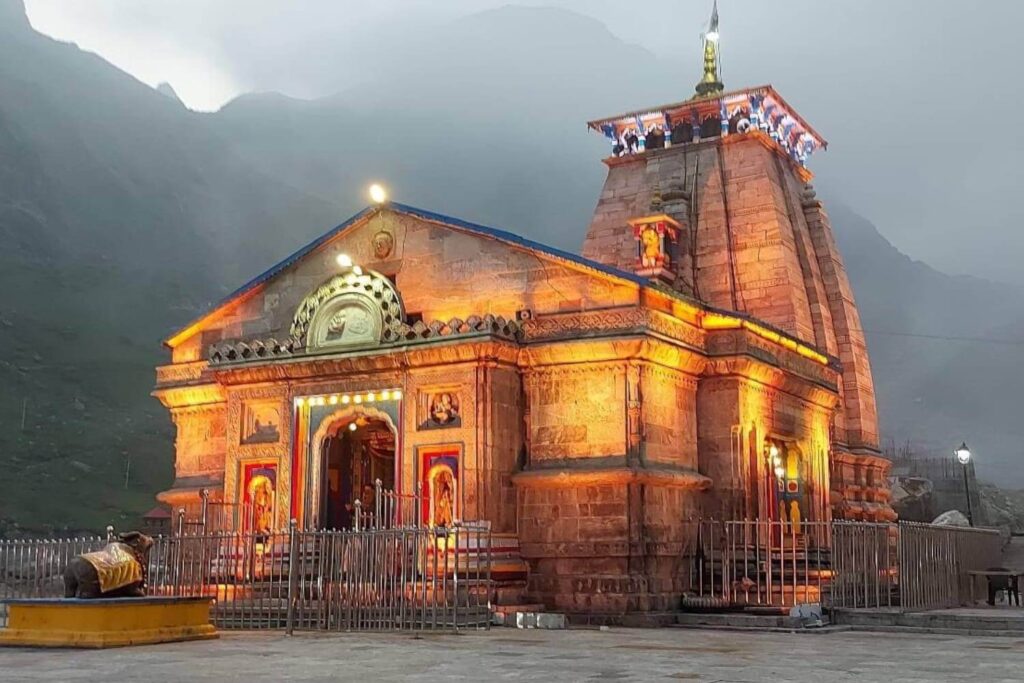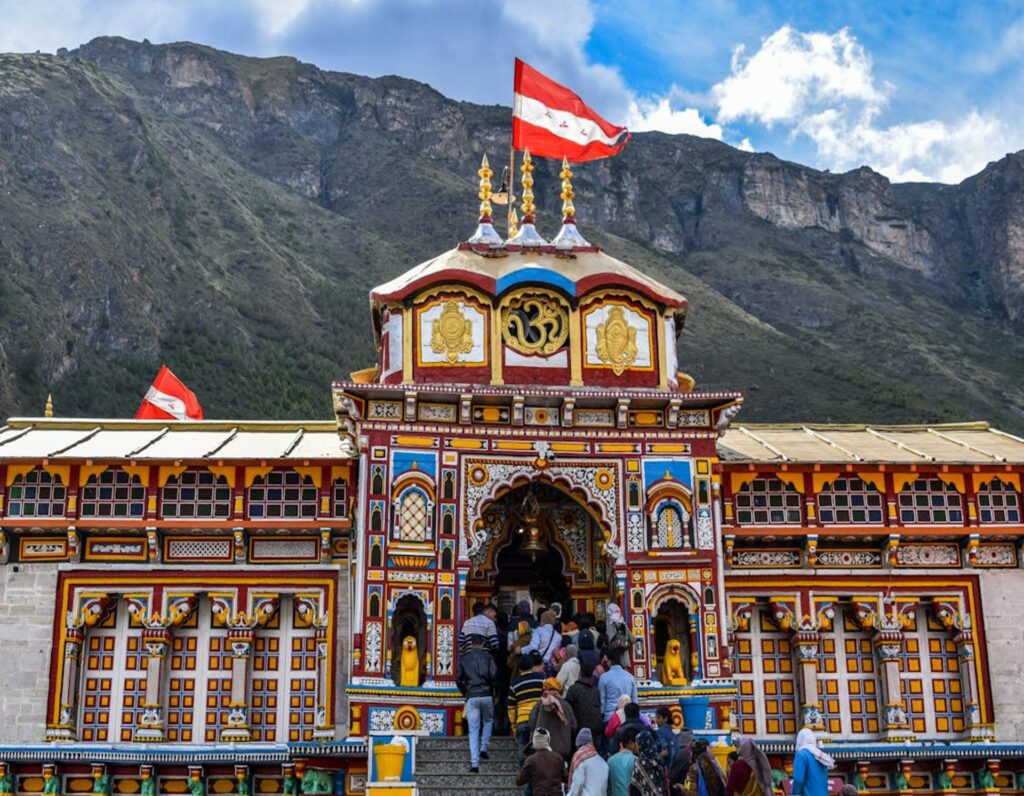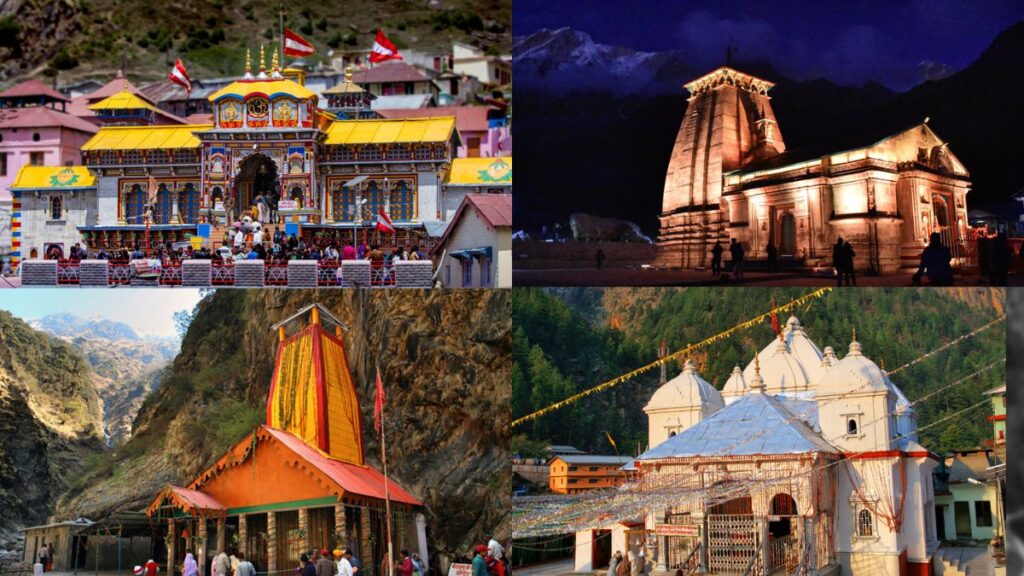
The Uttarakhand Chardham Yatra: A Journey to Spiritual Heights
The Uttarakhand Chardham Yatra is one of the most revered pilgrimage circuits in India, attracting thousands of devotees and tourists each year. The term “Chardham” translates to “four abodes,” which refers to the four sacred shrines nestled in the picturesque landscapes of the Himalayas: Yamunotri, Gangotri, Kedarnath, and Badrinath. Each of these shrines holds profound spiritual significance, steeped in rich history and mythological lore, making the Chardham Yatra a spiritually enriching experience.
The Uttarakhand Chardham Yatra is a revered pilgrimage journey in India, encompassing four sacred shrines: Yamunotri, Gangotri, Kedarnath, and Badrinath. Nestled in the majestic Himalayas, each dham holds profound spiritual significance and rich historical narratives. Yamunotri, the source of the holy Yamuna River, is celebrated for its thermal springs and rituals performed by devotees. Gangotri, dedicated to Goddess Ganga, marks the river’s origin and is linked to the legendary penance of King Bhagirath. Kedarnath, one of the twelve Jyotirlingas of Lord Shiva, draws thousands with its ancient temple and breathtaking surroundings. Finally, Badrinath, the abode of Lord Vishnu, is a vital pilgrimage site steeped in tradition and spiritual lore.
The journey through the Chardham circuit offers stunning vistas and a deep connection to nature and spirituality. Best undertaken between April and June, this pilgrimage is not just a trek; it is an exploration of faith, community, and cultural heritage. Each dham contributes to a transformative experience that resonates with millions, making the Uttarakhand Chardham Yatra a cherished journey for devotees seeking divine blessings and spiritual enlightenment.

Yamunotri: The Source of the Sacred River
Yamunotri is the westernmost shrine in the Chardham circuit, situated at an altitude of 3,235 meters. It is dedicated to the river Yamuna, considered one of the holiest rivers in Hinduism. The legend surrounding Yamunotri is linked to the sage Asit Muni, who is believed to have lived in the region and bathed in the sacred waters of the Yamuna to cleanse himself of sins. The temple, built in the 19th century, stands near the frozen Yamunotri glacier, from where the river emerges.
Devotees typically trek through scenic landscapes to reach the temple, where they perform rituals and offer prayers. The thermal springs nearby, especially the Surya Kund, are famous for their therapeutic properties. Pilgrims often cook rice in these hot springs as an offering to the goddess Yamuna, making the journey not only a spiritual one but also a culinary delight.

Gangotri: The Origin of the Ganges
Next on the pilgrimage is Gangotri, situated at an elevation of 3,042 meters. It is dedicated to Goddess Ganga, who is believed to have descended to Earth to cleanse the sins of humanity. The temple is said to have been built in the 18th century by a Gorkha commander, and it holds a unique significance as the source of the Ganges River. According to Hindu mythology, King Bhagirath performed intense penance to bring the river to Earth, and Ganga agreed to descend but only if she could flow through Lord Shiva’s hair to prevent her from destroying the world with her immense force.
The breathtaking landscape surrounding Gangotri includes towering peaks and lush forests, enhancing the spiritual ambiance. Pilgrims often engage in rituals at the banks of the Bhagirathi River, where they offer prayers and seek blessings for prosperity and peace.

Kedarnath: The Abode of Lord Shiva
Kedarnath, located at an altitude of 3,583 meters, is one of the twelve Jyotirlingas dedicated to Lord Shiva. It is one of the most significant Hindu pilgrimage sites, drawing thousands of devotees every year. The temple’s origins date back to the Mahabharata, where the Pandavas sought Lord Shiva’s blessings after the Kurukshetra war to atone for their sins. According to legend, Lord Shiva transformed into a bull and took refuge in the Himalayas, where the temple was eventually constructed.
The architectural grandeur of the Kedarnath temple, with its ancient stone structure and intricate carvings, adds to its allure. The temple is surrounded by stunning snow-capped peaks and the scenic Mandakini River, creating a serene atmosphere for worship. The journey to Kedarnath often involves a trek of about 16 kilometers from Gaurikund, providing pilgrims with an immersive experience in nature as they navigate through the breathtaking landscape.

Badrinath: The Abode of Lord Vishnu
Badrinath, the easternmost shrine of the Chardham circuit, is located at an altitude of 3,133 meters and is dedicated to Lord Vishnu. It is believed that the temple was established by the great sage Adi Shankaracharya in the 8th century. The site holds immense historical and spiritual significance, being one of the most important Vaishnavite pilgrimage destinations in India.
The legend of Badrinath is closely associated with the myth of the Badri tree, under which Lord Vishnu is said to have meditated to escape the harshness of the weather. The temple houses a black stone idol of Lord Vishnu, adorned with various ornaments, and the rituals performed here are deeply rooted in ancient traditions. The mesmerizing backdrop of the Neelkanth peak and the flowing Alaknanda River adds to the temple’s sanctity, making it a popular destination for devotees seeking divine blessings.

The Journey: A Spiritual and Scenic Experience
The Chardham Yatra is not merely a pilgrimage; it is a profound journey that intertwines spirituality with the stunning beauty of the Himalayas. Comprising four sacred sites—Yamunotri, Gangotri, Kedarnath, and Badrinath—each dham offers its own unique spiritual ambiance and breathtaking landscapes.
Starting with Yamunotri, pilgrims are greeted by the serene thermal springs and the pristine Yamuna River, where rituals are performed in the soothing waters. The journey continues to Gangotri, where the majestic Bhagirathi River flows, inviting devotees to connect with the sacred Ganga. The atmosphere is filled with reverence, as visitors recall the legendary penance of King Bhagirath.
The trek to Kedarnath, nestled in a dramatic mountainous setting, is invigorating. Here, the ancient temple dedicated to Lord Shiva draws thousands, surrounded by the awe-inspiring peaks of the Himalayas. Finally, Badrinath, with its rich history and devotion to Lord Vishnu, completes the circuit, offering a space for contemplation and prayer.
The Chardham Yatra is a spiritual odyssey that harmonizes nature and faith, creating an unforgettable experience that resonates deeply with every pilgrim who undertakes this sacred journey.

Best Time to Visit
The best time to undertake the Chardham Yatra is during the summer months, typically from April to June, when the weather is pleasant, and the temples are open to devotees. The monsoon season (July to September) can bring heavy rainfall, making the routes challenging and potentially unsafe. As the temples close for winter, the period from October to March is not advisable for pilgrimage due to extreme weather conditions.
The Complete Chardham Yatra Experience
Spiritual Significance
The Uttarakhand Chardham Yatra is not just a physical journey; it represents a deep spiritual quest. Each dham holds a unique significance that resonates with devotees. The collective experience of visiting these sacred sites fosters a sense of community and shared faith among pilgrims. The rituals, prayers, and offerings made at each temple reinforce the spiritual connections to the divine.
The spiritual significance of the Chardham Yatra is immense, drawing countless devotees in search of divine blessings and enlightenment. Each shrine—Yamunotri, Gangotri, Kedarnath, and Badrinath—carries its own unique importance in Hindu tradition.
Yamunotri, dedicated to the goddess Yamuna, symbolizes purity and forgiveness, inviting pilgrims to perform sacred rituals in its thermal springs. Gangotri, honoring Goddess Ganga, represents the power of penance, linked to King Bhagirath’s devotion to bringing the river to Earth.
Kedarnath, one of the twelve Jyotirlingas, is a pivotal site for Shiva worship, offering a space for meditation and reflection amidst stunning Himalayan beauty. Lastly, Badrinath, dedicated to Lord Vishnu, is central to Vaishnavite devotion, connecting followers to the principles of dharma and spirituality.
Together, these sites form a sacred circuit that fosters community, devotion, and personal transformation, making the Chardham Yatra a vital pilgrimage for spiritual seekers in Hinduism.
Scenic Beauty
The journey through the Chardham circuit offers breathtaking views of the majestic Himalayas, lush valleys, and serene rivers. The picturesque landscapes enhance the pilgrimage experience, providing moments of tranquility and reflection. Each trek to the dham is adorned with vibrant flora and fauna, adding to the beauty of the journey.
The scenic beauty of the Chardham Yatra is one of its most captivating aspects, drawing pilgrims and nature lovers alike. Nestled in the majestic Himalayas, each of the four shrines—Yamunotri, Gangotri, Kedarnath, and Badrinath—offers breathtaking vistas that enhance the spiritual experience.
Starting with Yamunotri, visitors are greeted by stunning views of snow-capped peaks and lush green valleys. The picturesque landscapes are further enriched by the sacred thermal springs, creating a tranquil environment. Moving to Gangotri, the sight of the Bhagirathi River cascading through rocky terrains, surrounded by towering mountains, evokes a sense of peace and reverence.
The journey to Kedarnath is equally enchanting, with a challenging trek that rewards pilgrims with panoramic views of dramatic cliffs and serene alpine meadows. The ancient temple, set against the backdrop of formidable peaks, offers a striking contrast that captures the essence of nature’s grandeur.
Finally, Badrinath boasts the awe-inspiring Neelkanth Peak and the flowing Alaknanda River, creating a stunning tableau of spirituality and nature. This combination of spiritual significance and breathtaking beauty makes the Chardham Yatra a truly unforgettable journey for all who undertake it.

Cultural Heritage
The Chardham Yatra is also a celebration of India’s rich cultural heritage. The rituals, festivals, and local traditions observed at each site reflect the diverse spiritual practices across the region. Engaging with local communities and participating in traditional activities enriches the overall experience, allowing pilgrims to immerse themselves in the cultural tapestry of Uttarakhand.
Best Time to Visit
The ideal time to undertake the Chardham Yatra is during the summer months, typically from April to June. During this period, the weather is pleasant, and the temples are open to devotees. The monsoon season (July to September) can bring heavy rainfall, making the routes challenging and potentially unsafe. The period from October to March is not advisable for pilgrimage due to extreme weather conditions, as many temples close for the winter.
Tips for Pilgrims
When planning your Chardham Yatra, it’s essential to keep a few practical tips in mind. Proper physical fitness is crucial, as the treks can be demanding. Pilgrims should also carry essential items like warm clothing, sturdy footwear, and a basic medical kit. Staying hydrated and following local guidelines can enhance the experience and ensure safety during the journey.
Respecting Nature and Traditions
As pilgrims navigate the sacred landscapes, it’s vital to respect the environment and local traditions. Maintaining cleanliness and adhering to local customs not only honors the spiritual significance of the journey but also contributes to the preservation of the natural beauty that surrounds these sacred sites.

Conclusion
The Uttarakhand Chardham Yatra is more than just a pilgrimage; it is a journey into the heart of spirituality and nature. Each dham has its own rich history and legends that contribute to the overall significance of the pilgrimage. The experience is one of introspection, devotion, and connection to the divine, set against the backdrop of the majestic Himalayas. For anyone seeking spiritual fulfillment and a deeper understanding of Hindu traditions, the Chardham Yatra promises an unforgettable experience, leaving pilgrims with memories that last a lifetime. Whether you are a devoted pilgrim or a curious traveler, the Chardham Yatra offers a unique glimpse into India’s spiritual heritage, making it an essential part of any travel itinerary.








Leave a Reply